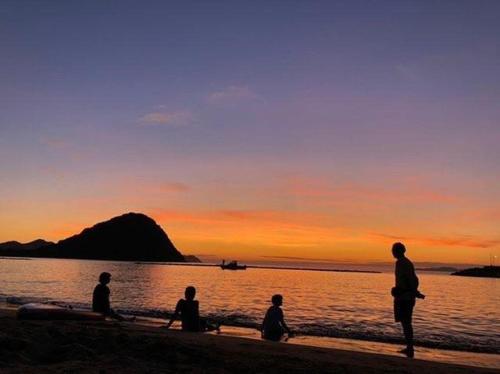Kasayama
menuMenu
A small volcano, 112 meters above sea level, jutting out into the Sea of Japan. From the summit, you can enjoy a panoramic view of Hagi's cityscape and the islands scattered across the Sea of Japan.










Highlights
- Stunning summit views
- Popular trekking course
- Cool 'kazefuki' (wind holes)
- Rare coexistence of warm and cold-climate plants
- Abundant nature including camellia groves
Basic Information
- Address
- Kasayama, Tsubakito, Hagi City, Yamaguchi Prefecture Search for tourist attractions in Yamaguchi
- Access
- The closest train station is Koshigahama Station on the West Japan Railway Company (JR West) line. Buses to Koshigahama are also available from Hagi city center. Furthermore, the mountain is accessible by car, with parking available near the summit. Show route
- Op.Hours
- Operating Hours: 9:00 AM - 5:00 PM
- Cld.Days
- Closed: Year-end and New Year's holidays
- Fee
- Admission Fee: Adult ¥500, Child ¥250
- INFO
- Parking: Free parking available
Overview
Recommended nearby attractions
Taiheiyama Summit Park

Taiheiyama Summit Park boasts stunning panoramic views of the Hofu plain and the Seto Inland Sea. In spring, 100,000 azaleas bloom in vibrant color, and at night, the glittering cityscape lights up the night sky.
Senjoujiki

A breathtaking grassland offering panoramic views of the Sea of Japan!
Nagato Gorge

Nagato Gorge is a gorge boasting magnificent nature and diverse landscapes. Full of highlights such as oddly shaped rocks, waterfalls, and deep pools, you can enjoy beautiful scenery throughout the four seasons.
Akiyoshidai

Experience the majestic nature, mysterious caves, and thriving life of Akiyoshidai, one of Japan's largest karst plateaus.
Riverside Park - Kawazu Cherry Blossoms

At the riverside park right next to Michi-no-Eki Hagi Shimaato, approximately 120 Kawazu cherry blossom trees burst into bloom, heralding the arrival of spring.
Horinouchi Kagi-magari (Key-Shaped Street)

A charming key-shaped street that looks like a set from a period drama.
Hagi Meirin Gakusha

A facility preserving history and culture, located on the site of the former Meirin-kan, the Hagi Han School that produced many of the leaders of the Meiji Restoration.
Shokasonjuku (松下村塾)

A World Heritage site, this school educated the individuals who spearheaded Japan's modernization.
Takamine Castle

Stunning panoramic views of Yamaguchi City!
Tsunoshima Island

The white sand beach and cobalt blue sea that appear after crossing the Tsunoshima Ohashi Bridge are truly a breathtaking sight!
Nearby Hotels
Hagi Kanko Hotel

Ryokan Ganjima Besso

Kominka Guesthouse Hagi Akatsukiya

Haginoyado Tomoe Ryokan

Hagi Royal Intelligent Hotel

Resort Hotel Mihagi

Hagi Ichirin

Hagiyaki no Yado Senshunraku

Ryokan Hagihonjin

Hostel Hagi Time

